Measuring SEO Success Metrics by 2024
If you’re running an online business, a blog website, then masuring SEO success metrics is crucial.
After all, you want to be confident that your investment will be worthwhile if you’re going to devote the time and money necessary to develop and manage a white hat SEO plan.
But you might be wondering, “What is exactly measuring SEO success metrics?”
Measuring SEO success metrics is what you use to assess your SEO activities and make optimization choices. They also provide you the ability to recognize errors, discover opportunities, and notice changes.
Your website and SEO objectives will determine the metrics you choose to monitor. However, there are a few fundamental variables that each SEO should continuously track.
The good news is that almost every aspect of your SEO approach can be measured in today’s Digital Marketing world.
Because of the quantity of data on site performance provided by tools like Google Analytics, you’ll never be in the dark about whether your SEO efforts are successful and how they’re affecting your most essential objectives.
Nowadays, a common issue for website owners is a lack of information access. It involves choosing which metrics to emphasize.
To say nothing of the information offered by hundreds of other analytics programs, it would be nearly difficult to comprehend all of the reports accessible in Google Analytics alone.
To help you evaluate your outcomes, we’ll provide 13 SEO metrics in this article to get the needed data in order to improve your SEO visibility performance.
But choosing the appropriate indicators is crucial if you want to learn anything useful from measuring SEO success metrics. After all, you could be monitoring thousands of metrics.
However, reading a monthly report that included all of these would take hours.
Reports are considerably easier to understand, handle, and use when you choose a small number of metrics. That’s why we will focus on 13 SEO metrics.
So grab a pen and read carefully!
1. Backlinks: the most important SEO metric
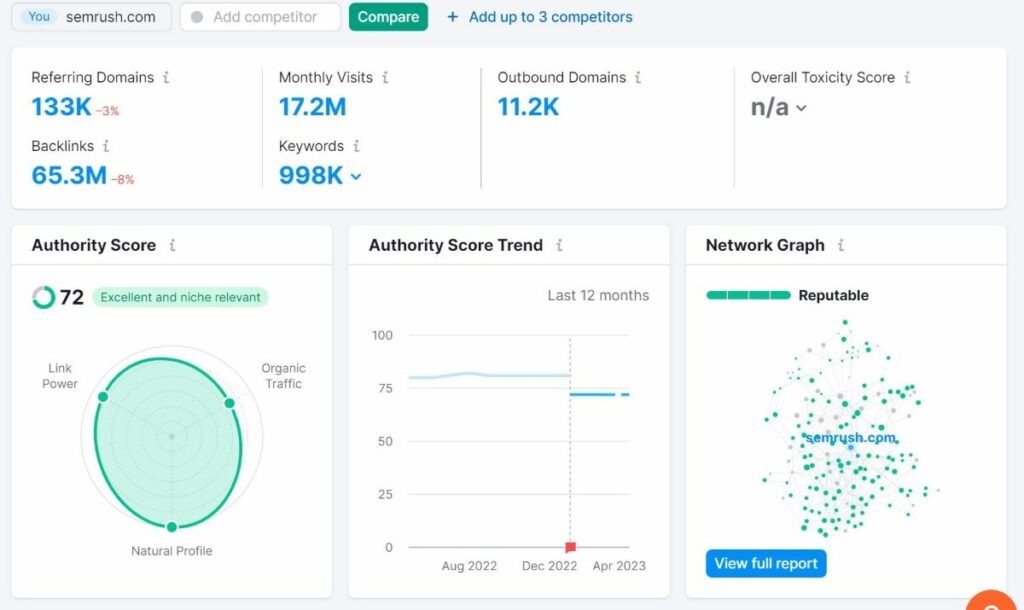
Backlinks are a crucial aspect of measuring the success of your SEO success metrics. As the number and quality of backlinks to your website increase, your website’s visibility and authority improve, leading to a higher ranking on search engine result pages.
According to a study by Moz, backlinks are the most significant factor in Google’s ranking algorithm! So, it’s essential not only to have more backlinks pointing to your website but to ensure they come from high-quality sources.
“When it comes to backlinks, quality is more important than quantity.”
Brian Dean, the founder of Backlinko.com
Backlink Analytics makes it simple to keep tabs on your backlink count and referring sites. You can use SEO tools to assess the success of your site’s link-building efforts, find new backlinks, and learn when old backlinks are removed.
It’s useful to know how many new backlinks are pointing to your website as you evaluate your link-building strategies. Your present technique is working if fresh websites are linking to your content and you have a strong follow link profile.
So, focus on building relevant, authoritative, and reputable backlinks to boost your SEO success and dominate the search engine results page!
2. Measuring SEO success metrics: Keyword Ranking
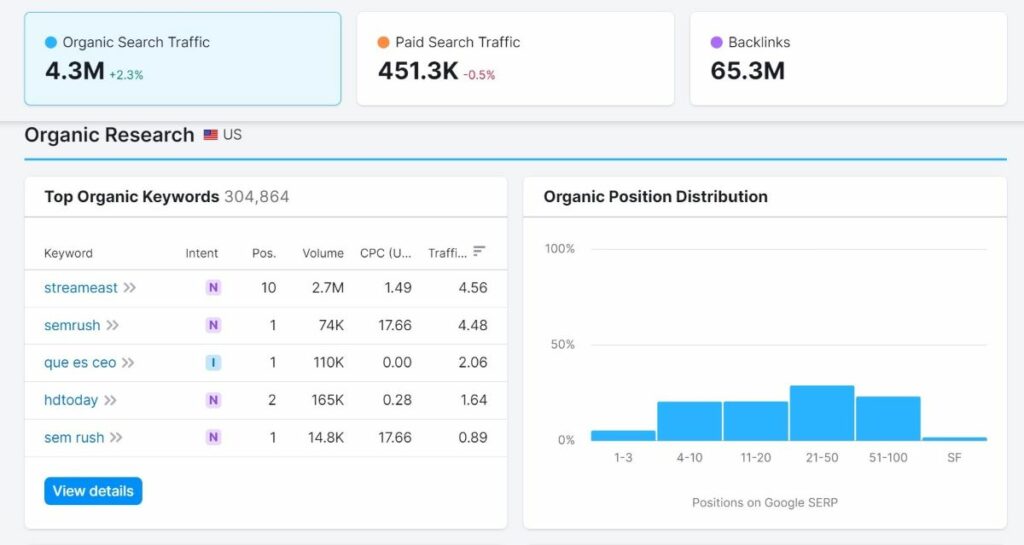
You conducted keyword research when planning your SEO outlines and selected the proper terms to focus on for your specific target market.
Now, use selected keywords to conduct a Google search to see how your website ranks in comparison with its competitors in search engine results.
The objective is to be found on the first page since this will provide you with the best chance to increase organic traffic to your website.
3. Know your site Visibility in SERP

Google generates a result or search engine results page (SERP) for each query. These results include organic results, advertising, and SERP features. Featured snippets (quick answers), knowledge panels, and image packs are a few examples of SERP features.
The number of people who view your website in the search results is measured by search engine visibility, which may be impacted by the reliability of the SERP elements.
However, this indicator gives you an overall overview of your SEO success.
The Position Tracking Tool of the SEO toolkit makes it simple to verify the visibility of your website.
As an example, Semrush provides a featured snippet function to help you plan your content by identifying the chances to rank for featured snippets for particular keywords and gaining insight into what the current featured snippet looks like.
Make sure you understand how to change your Google business listing because it’s crucial to keep data up to date to increase search exposure.
4. Organic Traffic Metric
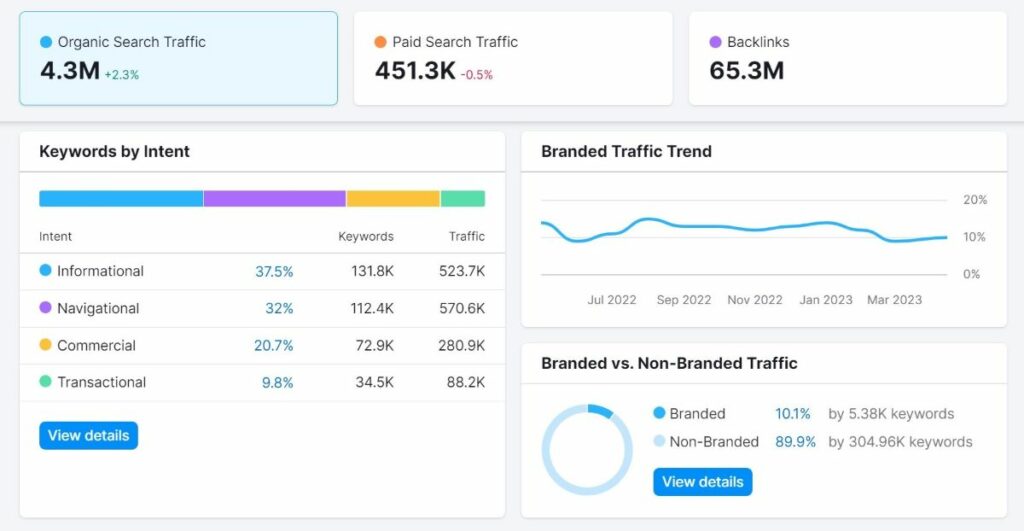
Organic traffic can boost SEO success to incredible heights! According to research conducted by BrightEdge, organic traffic accounts for nearly 53% of all website traffic, beating paid and social media traffic combined!
Some digital marketing expert As Bill Hunt puts it, “Organic search is the foundation of your Internet presence.” This means that relying solely on paid advertising or social media to generate traffic to your website is not sustainable in the long run.
Organic traffic is essential because it validates the relevance and authority of your website in the eyes of search engines like Google. When search engines recognize your website as trustworthy, you’re more likely to rank higher in the search results!
So, if you want to enjoy long-term SEO success, investing in organic traffic is a must!
5. CTR Metrics
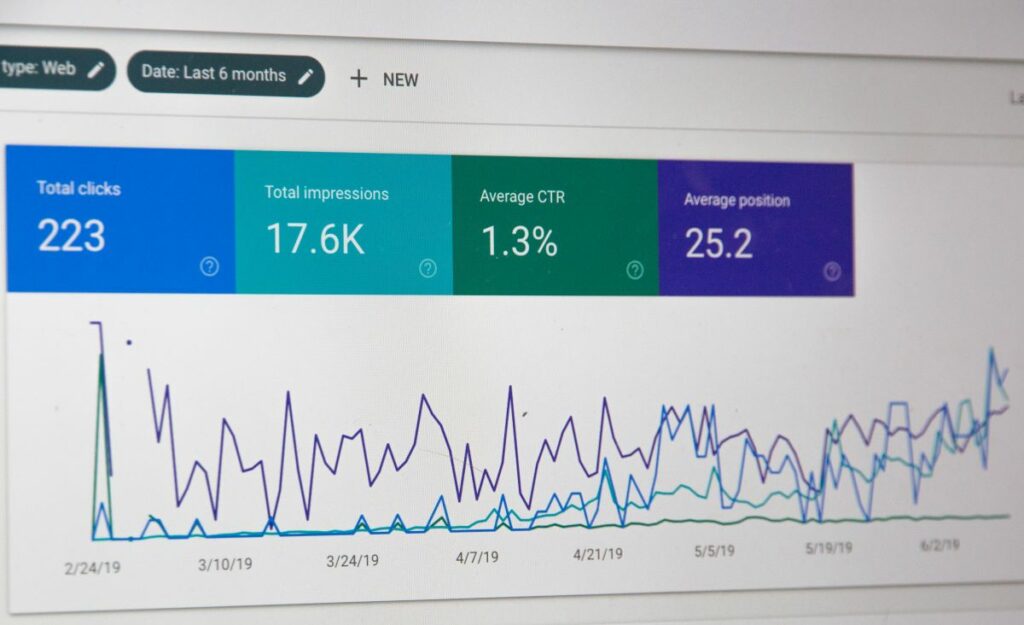
CTR metrics are an integral component of SEO success! It’s not just about driving traffic to your site and that’s it, but about converting visitors into customers successfully.
As Ryan Stewart, founder of web development firm WEBRIS, states, “CTR is the best indicator of success on a search engine results page.”
By focusing on improving your CTR, through crafting compelling meta-descriptions and optimizing your titles, you can not only boost your search engine ranking but also drive more sales to your website.
So don’t skimp on your CTR metrics – it’s the secret to your SEO success!”
6. Conversion Rate is the juice of your SEO effort
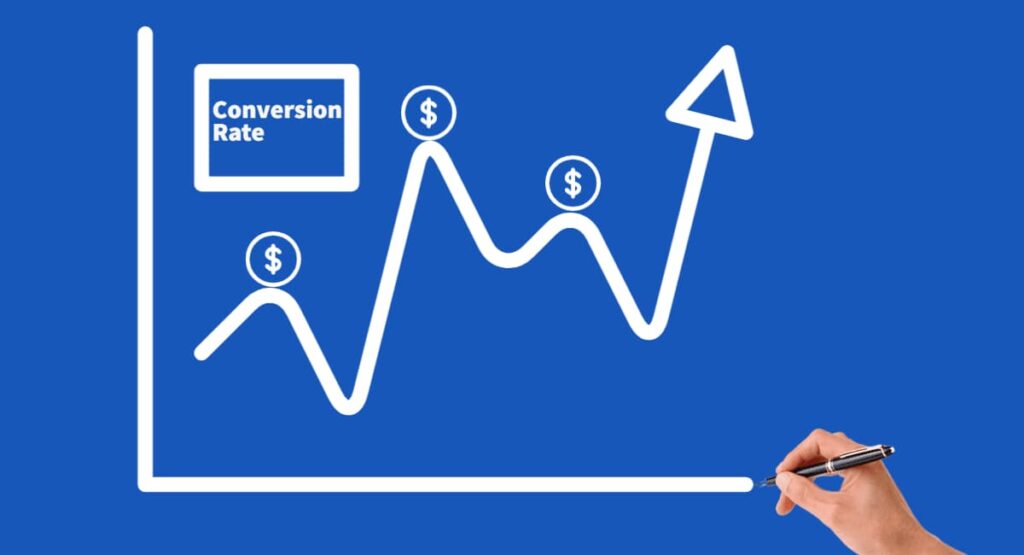
The entire effect of your SEO strategy on the revenue generated by your company is shown by your conversion rate. This indicator is arguably the most significant when determining the success of your website. In the end, a website serves as a platform for showcasing your offerings and turning leads into customers.
Setting up custom goals in Google Analytics is one approach to keeping track of your conversion rates. With one of their pre-made templates, you can determine goals. From there, you can check visitor goals like reading a blog post, watching a video, signing up for emails, taking a course, and any other actions that convert a visitor to a subscriber or buyer.
With that, you can monitor the proportion of visitors to your website who take any of the steps and convert. The same data may be utilized to improve the layout, article, and offers on your website to drive more people to your website and convert them to paying clients or subscribers.
Using Sumrush Content Marketing Toolkit, help you require additional assistance with your content marketing plan. Customized templates for content that is SEO-friendly are provided. You can analyze your content to see what needs to be improved. Discover topics for content that will appeal to your audience and practical advice on how to produce high-quality content.
7. Page speed Score
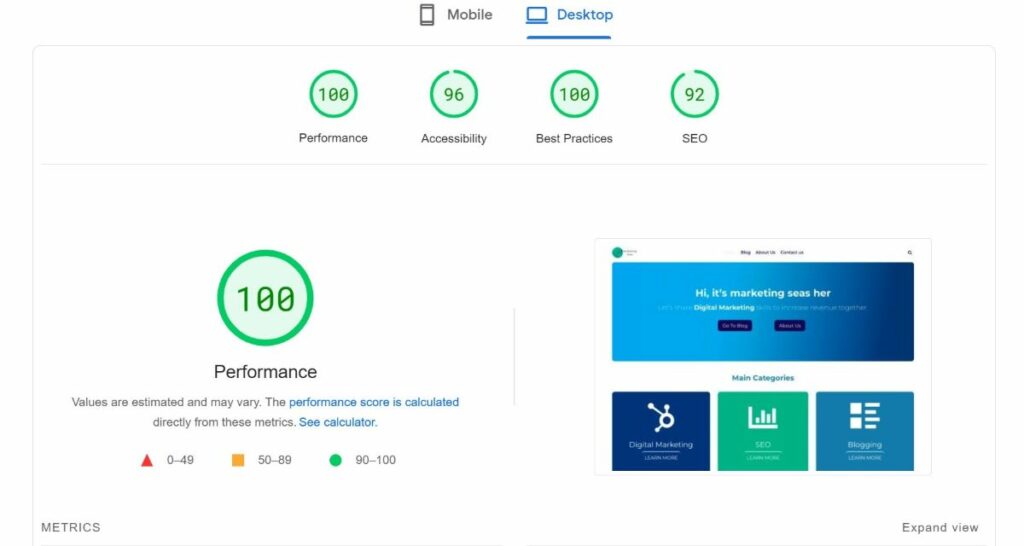
To measure your SEO success metrics, page speed is a crucial factor that influences the majority of the other metrics. According to a Portent study, your site’s revenue per page view doubles when its loading time is reduced from two to one second.
Page speed affects your conversion and bounces rates in addition to being a ranking element for your website. Fast websites and low bounce rates have a strong association, according to Google’s new page speed industry criteria.
To determine whether your website has the best page speed score, you can use Google’s PageSpeed Insights tool for free. A 100% grade is quick. A 90 or higher score that isn’t 100% is regarded as good. If your page speed score was between 50 and 90, it needs to be raised. A 50% or below page speed score is regarded as poor.
8. Keep an eye on traffic quality

The efficacy of an SEO strategy is greatly influenced by the caliber of the traffic. Getting the appropriate kind of visitors to your website is more important than simply increasing traffic volume.
Your visitors will be more likely to interact with your content, make a purchase, or visit your site again if you receive high-quality traffic, which will increase your conversion rates and, eventually, your revenue.
Search engines may assume that your website is not valuable to users if bounce rates rise and visitors are less likely to stay on it for an extended period.
As a result, investing in high-quality traffic can significantly affect your total SEO success, thus it’s crucial to regularly analyze and raise traffic quality!
9. More indexed pages = More traffic opportunities
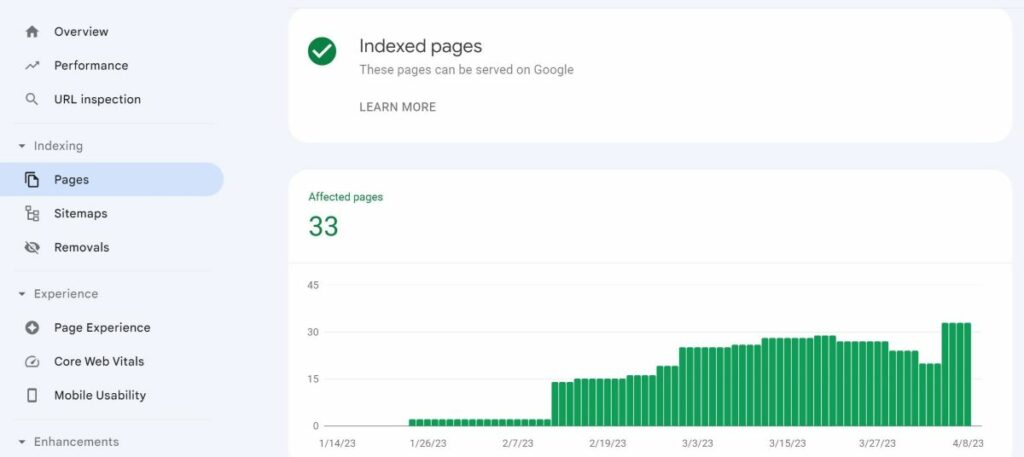
To optimize a website for search engines, pages must be indexed. They are web pages that search engines like Google, Bing, and Yahoo have discovered and saved.
A website is more likely to be ranked higher in search results the more indexed pages it has! Search engines like websites with a large number of excellent indexed pages because this indicates the website is relevant and an expert in its field.
For example, a blogger that consistently writes original content will have more indexed pages than those who don’t. Their website becomes more indexable as a result, increasing their chances of getting organic traffic!
Thus, you must concentrate on producing high-quality material that search engines can index if you want to improve the SEO of your website.
10. Returning Visitors mean loved website.

Returning visitors is an integral part of SEO success, accounting for a significant portion of a website’s traffic.
Studies show that returning visitors are twice as likely to generate conversions as first-time visitors, with a conversion rate of up to 70%! As SEO expert Neil Patel puts it, “Returning visitors are a strong signal of the quality of a website.”
When visitors come back to a website, it sends a signal to search engines that the website provides valuable and relevant content, leading to improved search engine rankings.
By creating engaging and valuable content, website owners can encourage visitors to return and increase their chances of SEO success.
So don’t underestimate the power of repeat visits! They can make all the difference in your SEO efforts.
11. Domain Authority
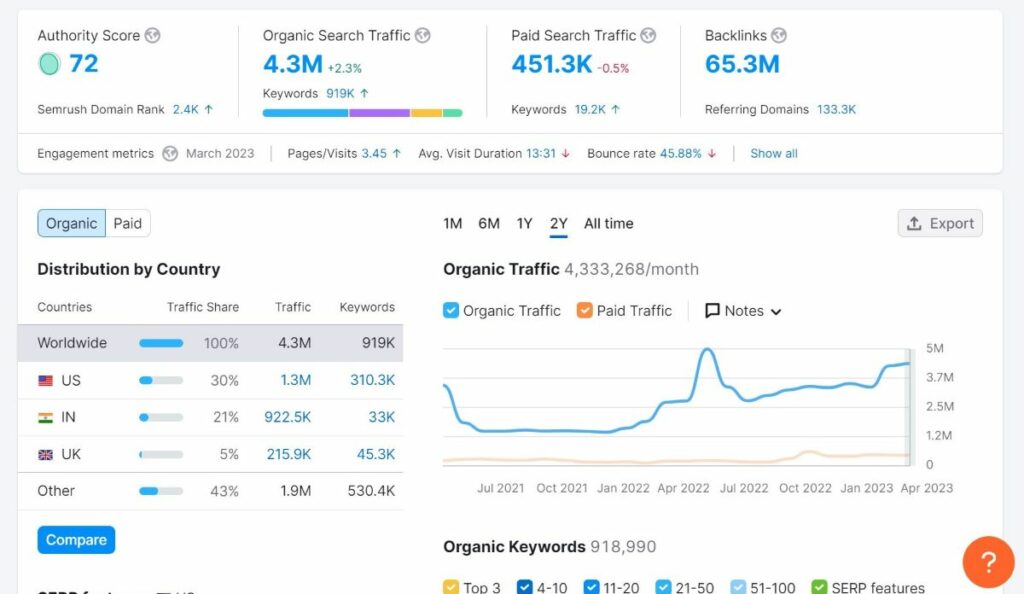
Compared to your competitors, how often does your website show up in user search results? The more highly you are ranked for a certain keyword, the more frequently your site will appear in search results thanks to your domain authority.
Although domain authority isn’t used by Google to rank your site, it’s a useful measure to monitor because it lets you see how you stack up against the competition.
Before clicking on a link, users only browse the search engine results for about nine seconds. You want to appear on the first page of users’ search results, not those of your rivals.
12. Consider Bounce Rate but …

Do you know how it feels to enter a store and not find anything that piques your interest? You simply look about the space without making a purchase or picking anything up to examine more closely.
The bounce rate counts the number of visitors to your website who leave without engaging with any of your content. They arrive and depart. There isn’t a single link click from them.
A high bounce rate may indicate that you need to improve the usability of your website and how your content relates to the search terms you want it to rank for.
However, in some cases, the bounce rate is not important as you may think.
Why?
Simply because people are searching for precise information. And once they get it, they leave. As you can see, it doesn’t mean that your site is worthless.
13. Page Visit Time
The first step every website owner has to do is to attract visitors to his website, but the second one is related to keeping them there for a long time. So, creating educational materials that they desire to read is key to achieving this.
The main question you can ask yourself to achieve this goal is:
Do my site visitors find the information they seek when my site appears in a search engine?
Your content strategy is successful if it draws in visitors and keeps them around for a while.
Test both short- and long-form content to discover what keeps visitors on your site longer to increase this statistic. If at all feasible, use pictures and videos in your material because they are known to improve engagement.
When Can I Expect to See SEO Results?

It makes sense to be enthusiastic about putting an SEO success plan in place for your website. However, how long does it take to see benefits from SEO? The truth is that you have to be patient and give your SEO efforts time to pay off.
However, bear in mind that it depends on several things including your website’s present status, competition, keyword complexity, and search engine algorithms.
Generally, you may start to notice some success within a few months. While some changes can become apparent within a few weeks, others might take up to a year to make a noticeable difference.
Keep up your SEO efforts consistently and don’t give up if you don’t get results straight away. A successful SEO strategy is worth the wait in the long run!
Rounding up
Well, there you have it. So, measuring SEO success metrics is vital.
As we’ve seen, there are 13 metrics to track, and each one can give you valuable information about how your website is performing.
But remember, numbers aren’t everything! While ranking high on Google and getting lots of traffic is great, it’s ultimately the quality of your content and the satisfaction of your users that will lead to long-term success.
So, as you track your metrics, don’t forget to step back and think about the big picture. And most importantly, keep creating amazing content that people will love – and the rest will fall into place!







